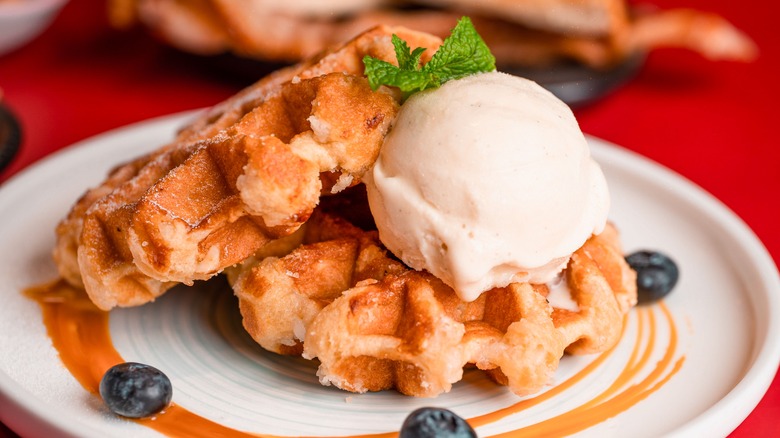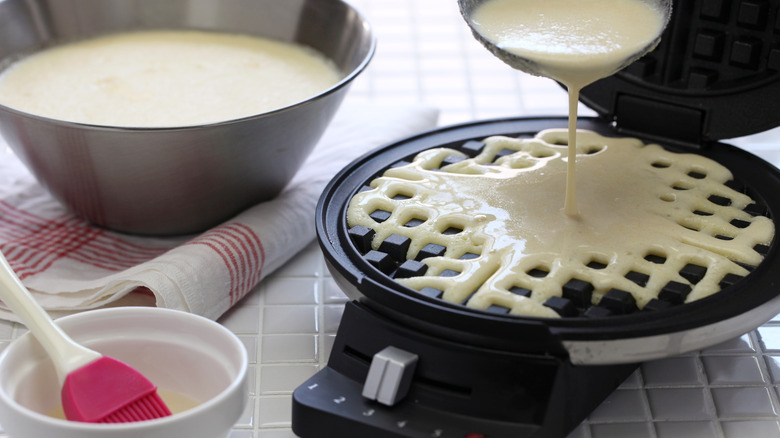The Extra Step That Makes The Lightest And Fluffiest Waffles
Sometimes a buttery frozen waffle from the toaster just isn't cutting it. No, you want that light, fluffy, and crunchy goodness: the Belgian waffle on the menu at your hometown diner. How do you replicate that at home? There is a simple trick that Ree Drummond recommends: whipped egg whites.
Instead of cracking the egg directly into your mixing bowl with the rest of your batter, separate the whites from the yolks. You can put the yolks in with the rest of your wet ingredients. Keep the egg whites in a bowl on their own. Then, whip to perfection! Once you have stiff peaks, you can slowly fold the whites into the rest of the batter. However, you should be careful not to overwork your batter; this can lead to a dense, tough final product.
But, how can you tell if your batter is undermixed or overmixed? Unfortunately, looser batters, like waffle mix, have the smallest leeway compared to others. When you're ready to move your batter to the waffle iron, your batter shouldn't have visible patches of flour or be completely smooth. A few lumps in your batter are actually good.
Though your buttermilk waffle recipe also plays a major role in the quality of your final product, whipping the egg whites can elevate any waffle. Even box mixes benefit from this hack. You don't need to go searching for any hard-to-find ingredients or buy a new fancy kitchen tool. All you need is a little extra elbow grease!
Additional tips for fluffing
Beyond whipped egg whites, there are several ways you can upgrade your waffle. However, another ingredient that can also play a major role in making waffles light and fluffy is flour. In the kitchen, flour is the foundation for all of the ingredients to come together, and there is something you can do with your flour to make your waffles airy: sift your flour. Sifting your flour — and all of your dry ingredients — breaks up any clumps and lumps that could hinder the texture of your batter. It has the double benefit of blending your dry ingredients together perfectly while adding extra lift at the same time.
Much like whipping your egg whites doesn't need an electric mixer, sifting doesn't necessarily require a sifter. Okay, yes, it's undeniably a lot easier with a sifter. However, a fine mesh strainer and a little shake will filter out lumps while adding lift to the dry goods. Alternatively, stirring your flour with a whisk will similarly help with aeration. As a last resort, a standard kitchen fork can stand in place of a whisk but don't expect the same results.


